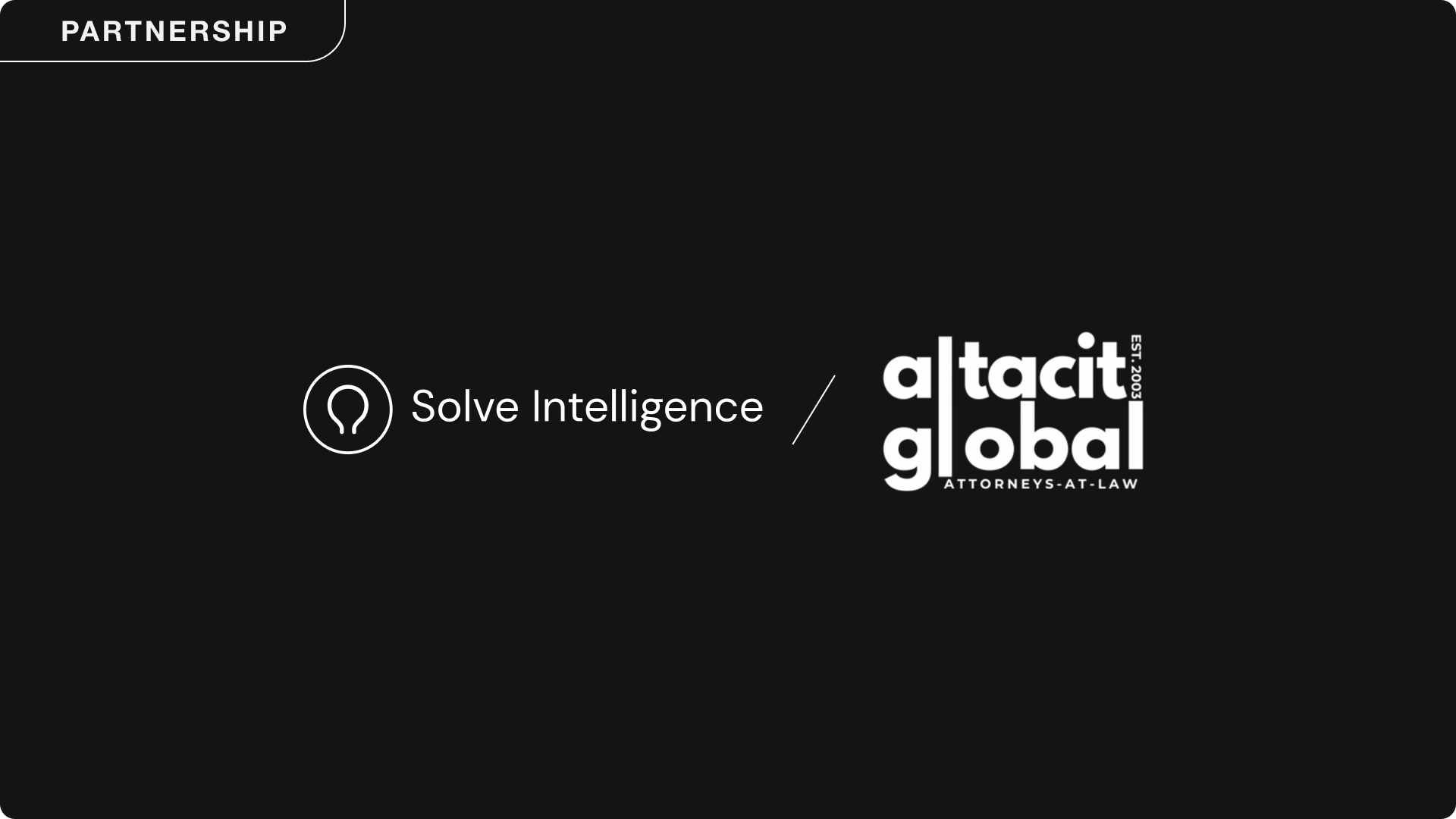AI for Patent Drawings: Figure Generation and Labeling
Recent developments in artificial intelligence have significantly simplified once complex tasks for patent professionals. One area that has recently seen a significant leap is patent figure generation, moving beyond simply analyzing drawings and figures to full generation capabilities, intelligent labeling, visual refinement, and rule-based output validation. These tools are evolving quickly to meet the increasing demands for patent professionals, allowing them to be more accurate and provide more compliant visual documentation of inventions quickly and easily.

Sample input image and sample figure generated entirely within Solve Intelligence
Beyond image to patent figure generation, AI can also help with autolabeling figures, taking text input and generating patent drawings, suggesting figures for a patent application, and so much more.
Reference and Element Labeling
Labeling of figure elements is an important step in preparing patent drawings, particularly in complex disclosures where multiple parts or subsystems must be clearly identified and cross-referenced within the written description. Traditional labeling is a manual and sometimes tedious task, susceptible to inconsistency and error.
Modern AI systems employ a combination of natural language processing (NLP) and computer vision techniques to match textual components (such as part names or reference numerals in a specification) with their corresponding elements in the drawing. This capability ensures that figures maintain structural and semantic alignment with the specification, which reduces the likelihood of errors during prosecution.
Moreover, some systems now include feedback loops where the AI validates label placement against jurisdictional rules and prompts the user to correct inconsistencies. This not only ensures compliance but also streamlines the iterative process between technical staff and legal reviewers.
Visual Depiction Enhancements
AI-based enhancement of visual materials encompasses a range of techniques that transform rough inputs (such as scanned sketches or CAD exports) into polished drawings suitable for submission. Core improvements include:
- Standardizing line weights to match regulatory norms
- Adjusting layout and spacing for clarity
- Applying uniform font and annotation formatting
- Correcting geometrical distortions and aligning perspectives
These transformations are especially useful in multidisciplinary applications, where visual elements derived from various engineering or scientific domains must be integrated into a coherent figure. AI aids in harmonizing styles and removing redundancies, improving legibility and professional presentation.
In contexts like biomedical devices or electronics, where drawings may include both physical and schematic representations, AI systems help maintain visual clarity and ensure that each element is depicted according to best practices in the respective technical field.



Text-to-Drawing Translations
One of the more advanced features of current AI systems is the ability to generate drawings from natural language descriptions. By parsing technical language—often from patent claims or specification sections—AI can infer structural layouts or process flows and produce corresponding visuals.
These systems typically rely on transformer-based NLP models trained on technical corpora, combined with generative diffusion models tuned for engineering-style drawings. The result is a drawing that reflects the described invention, which users can further refine or edit.
Incorporating this into early-stage drafting allows for quicker iteration and more coherent alignment between text and visuals. The approach also enables stakeholders across disciplines (such as engineers and legal professionals) to validate concepts before finalization.
Input: "Hand Holding iPhone"
Output:

Integration with Patent AI Drafting Systems
AI-based figure tools are increasingly being integrated with patent drafting systems. This enables automatic syncing of figure changes with text revisions and claim updates. These tools support and help generate more robust patent applications by connecting figure generation directly to specification content.
Furthermore, version control features allow users to track changes across iterations, compare outputs, and maintain alignment with evolving disclosure requirements. These capabilities are essential in fast-paced development environments where patent content changes frequently during drafting or prosecution. This also helps attorneys with filings that must be expedited quickly before disclosure dates.
Conclusion
The application of AI in patent figure creation is no longer limited to analysis, but extends to generation. Today’s systems incorporate advanced computer vision, language models, and rule-based logic to deliver end-to-end support for creating, labeling, validating, and enhancing patent drawings.
These tools allow patent professionals to focus on the substantive aspects of disclosure strategy by reducing manual workload and minimizing errors. As AI matures, future enhancements may include semantic figure editing, adaptive embodiment modeling, and integration with prior art databases to flag visual novelty or redundancy automatically.
Ultimately, these advancements contribute to a more efficient, accurate, and scalable approach to the world of IP—supporting inventors, attorneys, and examiners alike in pursuing innovation and protecting the same.
AI for patents.
Be 50%+ more productive. Join thousands of legal professionals around the World using Solve’s Patent Copilot™ for drafting, prosecution, invention harvesting, and more.



.png)
